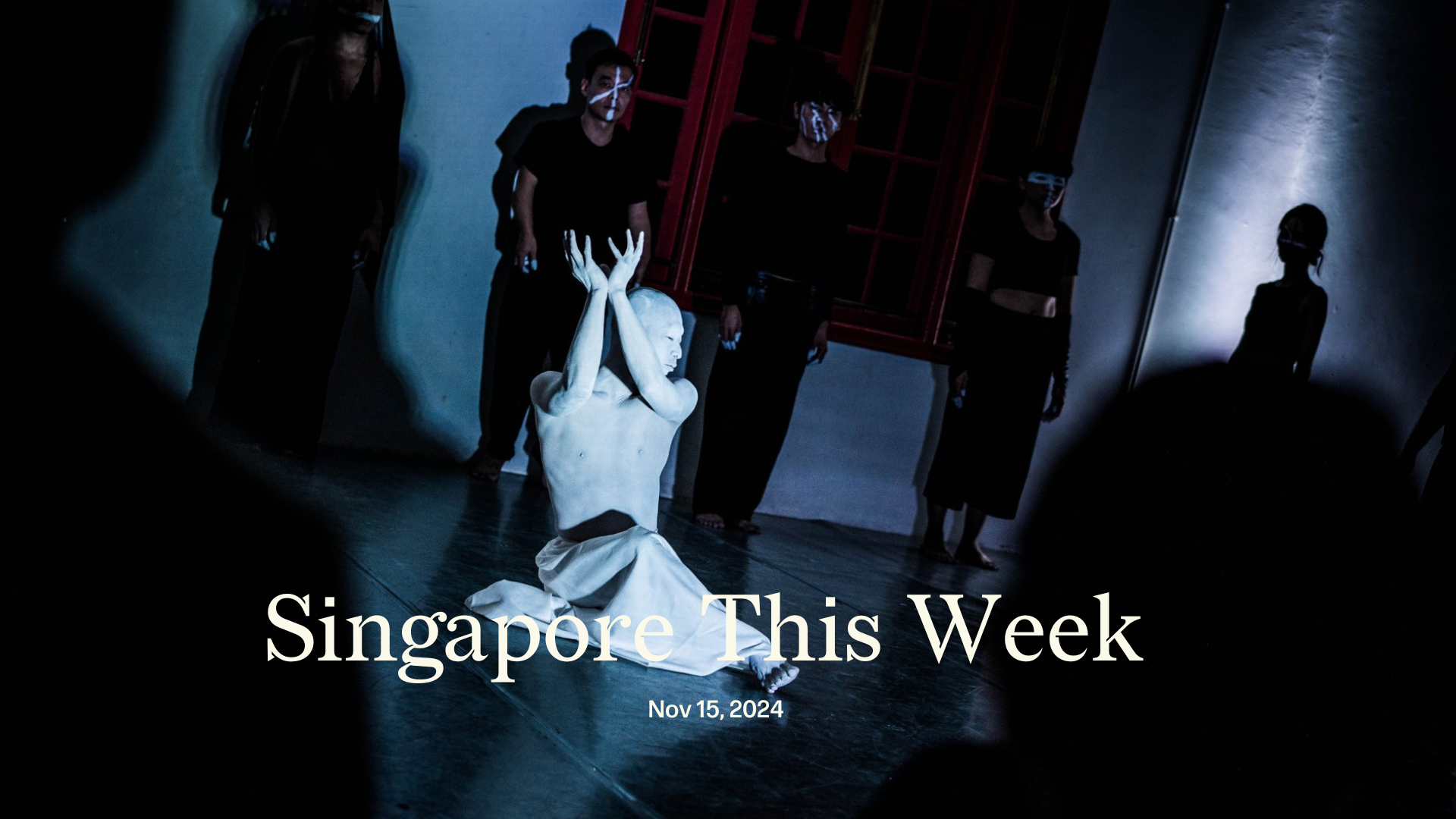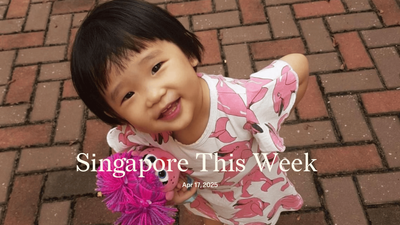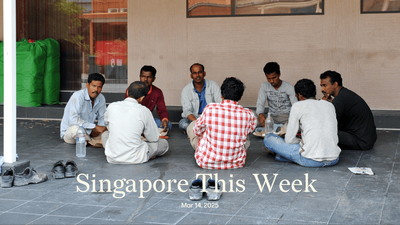Society: AI deepfakes a real problem
The police are investigating some Singapore Sports School (SSP) students for allegedly creating and circulating deepfake nude photos of their peers. The school has taken action: some of the perpetrators have reportedly been caned, while suspensions and various bans are being considered against others.
Two months ago, local activists had warned of an incoming tsunami of AI-generated porn, propelled by cheap services that allow users to combine anyone’s image with digitally manufactured bodies to create deepfake nude photos and porn videos. Others can “remove” the clothes of photographed victims. This content can then be circulated at lightning speeds on apps like Telegram that allow large files to be shared with more than 200,000 anonymous members. Outrages like the one at SSP have unfolded this year in schools across the world, from Australia to the United States. Victims are overwhelmingly women or girls: 99 percent by some estimates.
The obvious first step in dealing with the problem here would be to draft laws with punishments, including jail time, for anyone found creating, distributing and consuming nonconsensual deepfake content. There have been suggestions to strengthen existing laws too. But legislation alone won’t suffice. South Korean law, for instance, allows for deepfake porn creators to be jailed for five years, and yet the problem appears to be worse there than anywhere else in the world. The vast majority of perpetrators—167 out of 178—in a recent deepfake porn scandal that rocked the country were in their teens or 20s. Studies show that early teenage years, especially, are correlated with significantly lower cognitive and emotional empathic ability. Education, comprehensive sex education, centred on “consent” is vital. Explicit mention of this is currently absent from Singapore’s Ministry of Education curriculum. It is equally important to hold tech companies accountable by forcing them to identify and flag deepfakes, and explore the possibility of getting them to embed digital watermarks on all content created on their platforms.
But neither law, nor education, nor corporate cooperation are going to stop all bad faith actors, adult or teen. Anyone who’s online will have to start learning—parents will have to teach their children—how to arm themselves against exploitation. Help is arriving. There’s PhotoGuard, a technique that disrupts AI’s ability to manipulate images; another tool, Nightshade, applies invisible digital “poison” to images, fooling AI models into rendering completely unrelated photos; handbags instead of Taylor Swift, for example. In this game of cat and mouse, best to keep your claws sharpened.
Society: Landmark bill could prevent thousands from being scammed
Intrusive yet inevitable? In a global first, police in Singapore may get powers to control bank accounts of scam victims. If passed, the Protection from Scams Bill, will allow authorities to issue restriction orders (RO) to banks. Thus giving them the ability to control a customer’s banking transactions if “there’s reasonable belief” that the individual will transfer money to scammers. Besides all modes of money transfers, including in person over the counter, ATM and credit facilities will also be restricted. ROs last for a maximum of 30 days; can be extended five times for 30 days each time; and can be cancelled ahead of the 30-day limit, if the police assess that the individual is no longer at risk. Those subjected to the order will continue to have access to a fixed sum of money for paying bills and buying daily essentials; for more, they’ll have to show proof of how it’ll be spent. ROs will be issued only after exhausting all other ways to convince the individual that they’re being duped. Appeals against the order can be made to the Commissioner of Police, whose decision is final.
The recent proliferation of scams makes a strong case for the law, especially if victims refuse to listen to warnings from family, friends and/or law enforcement. From 2019 to 2023, the number of scam cases rose nearly five times, to about 46,600 cases. Last year, some S$650m was lost; the numbers hit record highs in the first half of 2024, with over S$385.6m lost in 26,587 reported cases. This despite extensive public education efforts and safeguards, such as Kill-Switch and Money Lock. In a public consultation, over 90 percent of respondents across age groups supported the Bill. Some even suggested that ROs should go further to include cryptocurrency exchanges and remittance companies. Naturally, there were concerns about the powers being abused. Several online commenters insisted that individuals should bear the responsibility and consequences for personal decisions. “Those who continue to give scammers money after being warned, don’t deserve any sympathy, or protection in any way, shape or form,” wrote one Redditor.
The Bill, if passed, may provide some protection to the vulnerable—seniors especially—but it’ll take more than a temporary legal intervention to tackle greed and gullibility. After ROs run their course, scammers can target these same individuals again, who may still hand over their savings.
History weekly by Faris Joraimi
I was looking at photographs of the old Market Street carpark, going down a bit of a rabbit-hole. The carpark was eight storeys high, each layer stacked on top of the other to form a colossal triangle with rounded corners. These curved facades suggest forward movement, like the bow of an ocean-liner riding placid waves. All those childhood hours in the backseat of my family car, ascending and descending concrete spirals, never attuned me to the possibility that a carpark could have such…grace. Built in 1964 by the Public Works Department, this was Singapore’s first multi-storey carpark, and South-east Asia’s largest when it was opened with fanfare by Lim Kin San, then minister for national development. As car ownership rose, this “skyscraper carpark” provided much-needed parking space in the busy financial district.
According to the book Everyday Modernism: Architecture and Society in Singapore, the multi-storey carpark was an innovation in transport infrastructure at the time, promising relief for what was apparently a growing problem. “It’s war when you park in Singapore”, said a 1951 newspaper article; drivers scratched cars and punctured tires in the violent jostle for space. A poem published in the magazine of the Automobile Association of Singapore, The Highway, lamented, “The parking problem rose each day / And made the drivers mad; / To drive a mile to find a place / Was indeed very sad”. But fear not, people of Singapore! It went on: “Up stepp’d the gallant government / To stop the consternation / They built a multi-storey’d car park / That earn’d a grand ovation.” Characteristically, the public complained. “‘Fifty Cents Per Hour!’ they cried / Oh lord, can we afford it? / By far it will the cheaper be / To sell our car and walk it”. Ballad to the Multi-Storey Car Park—as the poem was titled—ends on a sarcastic note, with the car park empty and unused, but still a good possible tourist attraction.
Even though it wasn’t the most affordable facility, the carpark was a statement. Taking up space among rows of wizened colonial shophouses, its high-modernist lines, muscular volume and minimal ornament were a vision of the future to which the newly independent republic aspired: efficient, practical, all that sort of thing. The Market Street carpark’s demolition in 2014 (for an office tower) wouldn’t sting as much if not for its social history, as well as its beauty. Docomomo, an international non-profit organisation that documents modern architecture, described it best: “Visually these smooth, cream-coloured arcs floated above open voids, reminiscent of Frank Lloyd Wright’s Guggenheim Museum. Much of the design’s elegance stems from the fact that it was almost pure structure, devoid of the clutter of walls, doors, windows, and roofs.” In the stairwell inside, hexagonal concrete lattices refracted sunlight onto mosaic floors. Even in the world of motorised speed, there were still things worth stopping for.
Arts: Butoh blossoms
A young woman in a navy pinafore, long braids and ankle socks picks her way through a teeming crowd and onto a low raised platform, her mouth agape and her limbs akimbo. But she’s no secondary school convent girl; she also has two full sleeves of tattoos and her face is a painted white mask: she’s performing butoh at a strobe-filled rave along Mohamed Sultan Road. The avant-garde dance form, originating in 1950s Japan, is getting a second wind here thanks to the interdisciplinary experiments of the Singapore Butoh Collective. Founded by the shapeshifting artist Xue, who’s also behind the “plague rave” series Endless Return, the collective has been the catalyst for a slew of workshops, pop-up performances and even resource-sharing for butoh aficionados here. Butoh can be choreographed or improvised; in both, the dancer’s body becomes the vessel for something primal and elemental, embracing the grotesque and the crude, channelling everything from the anxieties of alienation to the horrors of war. Butoh pioneers Kazuo Ohno and Tatsumi Hijikata were exponents of the form during a period of socio-political tumult and transformation in post-war Japan; in an early performance, Hijikata sported a shaved head and Ohno slathered himself in white powder, evoking the nuclear fallout on Nagasaki and Hiroshima. These aesthetics remain some of the strongest visual identifiers of butoh today.
Last month, the Singapore Butoh Collective managed to engage Norihito Ishii of Sankai Juku for a three-day workshop; the sought-after dancer-choreographer had made a pit stop in Singapore because the famed butoh troupe was performing at the Esplanade. While butoh has had some popularity in these more formal performance settings, the collective wants to make the art form “less insular”, recognising that it “can often appear intimidating and inaccessible” to the uninitiated. It’s hoping to get some state funding for a small but growing community of enthusiasts, having so far relied on members’ generosity and Xue’s own pockets. In Singapore’s hyper-efficient and hyper-productive climate, the collective has made a point of insisting on butoh’s elastic, almost glacial, pace—and resisting the strict formalisation of the artform. “Butoh embodies a special and inimitable quality of movement that arises from an embodied understanding of time,” Xue writes in the collective’s intermittent newsletter. “I hope we do not forget this as inhabitants of an accelerated city, where time often feels harsh and devouring.”
Tech: Singlish AI for patients? Shiok!
Singlish, with its homespun syntax and merry medley of colloquial expressions, has long been a hurdle for AI voice assistants and transcription services. Ask current AI models to decipher “Hello doctor, can help me anot ah?” and most will self-combust. Not for long though.
The AI Singapore Speech Lab has developed a model that can dynamically understand and transcribe English, Malay, and Mandarin—key Singlish components—with 90 percent accuracy. This technology is being deployed in various healthcare settings, including SingHealth Polyclinics, and is being tested with the Singapore Civil Defence Force (SCDF) for emergency call responses. Adapting AI technologies to local languages and dialects will ensure better representation and accessibility for diverse communities. At the same time, it could reduce the load on healthcare services through enhanced speed and accuracy of patient interactions and emergency responses. Thirdly, the model’s ability to operate offline, isolated from the internet, addresses important privacy concerns in healthcare settings. The involvement of AI Singapore, with support from the Ministry of Health, indicates strong governmental backing for AI adoption in the sector. What’s more, this technology has potential applications in other sectors too, such as banking and insurance, where accurate understanding of local languages is crucial.
Tech: Palm pilot
Imagine walking through NTUC Fairprice and waving your palm to pay after an annoying walk through the aisles. A new partnership between Visa and Tencent, with major banks like DBS, OCBC and UOB, also involved in a pilot programme at Alchemist cafe, might soon make this a reality. Palm payment technology, which uses biometric data from both palm prints and vein patterns, offers a unique blend of convenience and security. It’s contactless, making it more hygienic than fingerprint scans, and potentially more secure than facial recognition. The difficulty in spoofing palm vein patterns adds an extra layer of security, addressing concerns about identity theft and fraud. However, there are implementation challenges, including regulatory compliance across different countries, technical issues related to varying environmental conditions, and privacy concerns. Tencent’s is attempting to address them by adhering to local laws and establishing local data centres. If successful, lost credit cards or insufficient cash may become things of the past. Just hope scammers don’t get their hands on your palm prints.
If you enjoy Jom’s work, do get a paid subscription today to support independent journalism in Singapore.








